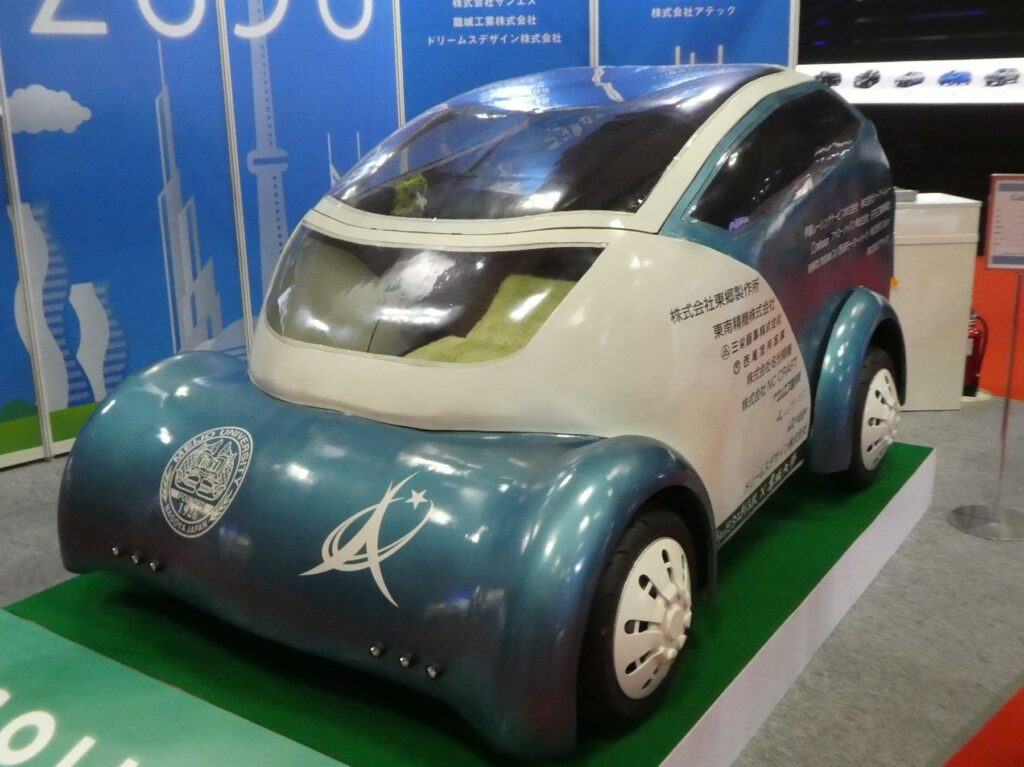As the world continues to grapple with climate change, the transportation industry is being forced to reevaluate its practices. One of the most significant changes sweeping through the sector is the rise of electric vehicles. Electric cars have come a long way since their inception, and there are now some exciting new advancements on the horizon that could revolutionize transportation as we know it. In this blog post, we’ll be exploring some of these top electric vehicle advancements that you won’t want to miss. So buckle up and get ready to learn about some cutting-edge technology that could change the way we think about getting around.

Introduction: The Future of Transportation
Revolutionize Transportation with the Top Electric Vehicle Advancements to Watch. The future of transportation is electric, and the advancements in electric vehicle technology are making it more accessible and convenient than ever before. With concerns about climate change and the need for sustainable transportation options, electric vehicles (EVs) are becoming increasingly popular. EVs offer a cleaner, quieter, and more efficient way to travel. From improved battery technology to faster charging times and longer ranges, the latest advancements in EVs are changing the game. With innovations in materials and high-tech features, driving an EV is becoming a dream come true for many people. In this article, we’ll explore some of the top electric vehicle advancements to watch out for in the coming years.

A Brief History of Electric Vehicles
Electric vehicles (EVs) are not a new concept. In fact, they have been around since the 19th century. However, it wasn’t until recently that EVs started gaining popularity due to concerns over climate change and the need for sustainable transportation. The first electric car was developed in the 1830s by Robert Anderson, but it wasn’t until the late 1800s that electric cars became more common. In the early 1900s, EVs were actually more popular than gasoline-powered cars due to their quiet operation and lack of emissions. However, advancements in gasoline engines and the discovery of oil in Texas led to a decline in EV popularity.
It wasn’t until the 1990s that EVs started making a comeback with advancements in battery technology and government incentives for clean energy vehicles. The first modern electric car was introduced by General Motors in 1996, called the EV1. Since then, many major car manufacturers have developed their own electric models, including Tesla’s popular Model S and Model X.
Overall, while electric vehicles have been around for over a century, recent advancements in technology have made them more practical and efficient than ever before.
Top Advancements in Electric Vehicle Battery Technology
Electric vehicle battery technology is a crucial aspect of EVs that continues to see major advancements. One key area of focus is increasing the energy density of batteries while reducing their weight and size. Lithium-ion batteries have dominated the market, but new solid-state batteries offer promising potential for even higher energy densities.
Another important advancement in EV battery technology is improving their lifespan through innovative battery management systems (BMS). These advanced BMS can optimize charging and discharging cycles, monitor individual cell performance, and prevent overheating or overcharging.
Moreover, developments like wireless charging using electromagnetic fields are being researched by various companies for convenience as well as an efficient means to charge safely without cords. In addition, recycling used car batteries will be essential with the projected growth of EV sales globally.
As electric vehicles continue to grow in popularity worldwide manufacturers are racing towards technological breakthroughs that improve range, cut costs and enhance safety all at once – Making Electric Vehicle Advancements critical for current and future transportation demands.

Game-Changing Improvements in Range and Charging Time
Advancements in range and charging time are crucial for the widespread adoption of electric vehicles (EVs). Battery technology has come a long way, with new developments that promise to make EVs more practical and convenient for everyday use. One of the most significant breakthroughs is the use of solid-state batteries, which offer higher energy density and faster charging times than traditional lithium-ion batteries. Another promising technology is wireless charging, which eliminates the need for cords and plugs.
In addition to battery improvements, charging infrastructure is also rapidly expanding. Public charging stations are becoming more common, and many companies are investing in fast-charging technology that can provide a full charge in as little as 30 minutes. Some automakers are even experimenting with vehicle-to-grid (V2G) technology, which allows EVs to send excess energy back to the grid during peak demand periods. These advancements are making EVs more practical and convenient than ever before.
Innovations in Electric Motors: Efficiency and Power Combined
Electric motors are the heart of electric vehicles, and advancements in this area have made significant strides. The key phrase here is “efficiency and power combined.” Motor manufacturers have been working on developing more efficient ways to use precious metals like copper and reducing the amount needed without sacrificing performance. This allows for lighter weight designs that can deliver more torque than traditional combustion engines. Another crucial development is sensor technology that enables better communication between the motor, battery, and other vehicle systems, enhancing overall efficiency. Additionally, new magnet materials such as neodymium-iron-boron (NdFeB) alloys have enabled smaller yet stronger motors with less energy consumption while still delivering greater power output. With these improvements, EVs’ driving experience has become much smoother with quicker acceleration times at lower RPMs due to instant high-torque capabilities from standstill positions.
Cutting-Edge Materials for Lighter, Safer, and More Durable EVs
Electric vehicles (EVs) are already lighter than conventional cars due to the absence of an internal combustion engine. However, new cutting-edge materials are making them even lighter and more durable. For instance, carbon fiber composites can significantly reduce vehicle weight without compromising safety or performance. These strong yet lightweight materials improve not only fuel economy but also overall handling and acceleration.
Another material showing promise is graphene, a single layer of carbon atoms that’s 200 times stronger than steel but much thinner and lighter. Graphene-based batteries could potentially boost the range of EVs by up to ten-fold while reducing charging time to just minutes.
These advancements in material science may sound like futuristic concepts, but they’re quickly becoming reality thanks to ongoing research and development efforts in the field of electric mobility. As these technologies continue to evolve, we may soon see even more impressive gains in terms of efficiency, affordability, and sustainability for all modes of transportation.
High Tech Features That Make Driving an EV a Dream Come True
Electric vehicles don’t just offer a cleaner and quieter driving experience, but they also come with advanced features that make them more convenient and enjoyable to drive. One of the most impressive advancements in EV technology is autonomous driving, which allows drivers to sit back and relax while the car drives itself. Although still in development, companies like Tesla have already introduced semi-autonomous features such as adaptive cruise control and self-parking.
Another exciting feature is infotainment systems, which provide access to music streaming services, navigational tools, climate controls, and other important functions through touchscreens or voice commands. The latest models even allow you to connect your smartphone wirelessly for seamless integration.
Other notable tech features include regenerative braking systems that capture energy from braking and use it for charging the battery, cameras that provide 360-degree views of your surroundings for safer maneuvering in tight spots or parking lots, as well as software updates over-the-air that can improve performance and add new features without having to take your vehicle into the shop. With these cutting-edge technologies integrated into electric vehicles today, there’s no doubt that driving an EV is truly a dream come true!
Conclusion: What the Future Holds for Electric Vehicles
Electric vehicle advancements are changing the way we think about transportation. From improved battery technology to faster charging times and cutting-edge materials, there’s a lot to be excited about in the world of EVs. As these innovations continue to develop, it’s becoming increasingly clear that electric vehicles are not just a fad – they’re here to stay.
Looking ahead, the future of electric vehicles looks brighter than ever before. With more investment pouring into research and development, we can expect even more breakthroughs in the years ahead. Some experts predict that within the next decade or so, most new cars sold will be electric.
Of course, challenges remain – from infrastructure issues like charging stations to concerns over supply chain sustainability for materials like lithium and cobalt. However, as long as innovators keep pushing forward with new ideas and solutions, there’s no reason why these obstacles can’t be overcome.
Overall, it’s an exciting time for anyone interested in sustainable transportation options. Whether you’re a die-hard gearhead or simply someone looking for ways to reduce your carbon footprint while still enjoying a great ride, there has never been a better time to explore what electric vehicles have to offer.
In conclusion, the advancements in electric vehicle technology are nothing short of remarkable. From battery improvements to innovations in motors and materials, the future of transportation is being revolutionized right before our eyes. With each passing year, EVs are becoming more efficient, powerful, and accessible to consumers.
As we continue to move towards a more sustainable future, it’s clear that electric vehicles will play a major role in reducing our carbon footprint and improving air quality. If you’re interested in learning more about electric vehicles and staying up-to-date on the latest advancements in the industry, be sure to check out our other content.
From reviews of the latest EV models to tips on how to make the switch to electric, we’ve got everything you need to know about this exciting and rapidly-evolving field. So what are you waiting for? Join us on this journey towards a cleaner, greener future today!
Answers
Q: Who is leading the way in electric vehicle advancements?
A: Tesla is currently leading the way with its innovative technology and design.
Q: What are the latest advancements in electric vehicle batteries?
A: Solid-state batteries are the latest advancement, offering longer range and faster charging.
Q: How do electric vehicles compare to traditional gas-powered cars?
A: Electric vehicles have lower operating costs and produce zero emissions, making them more environmentally friendly.
Q: What is the biggest objection to electric vehicles?
A: The biggest objection is the higher upfront cost compared to traditional gas-powered cars.
Q: How is the infrastructure for electric vehicles improving?
A: The installation of more charging stations and the development of faster charging technology are improving the infrastructure.
Q: Who benefits the most from electric vehicles?
A: Those who drive long distances and want to save money on fuel costs benefit the most from electric vehicles.

